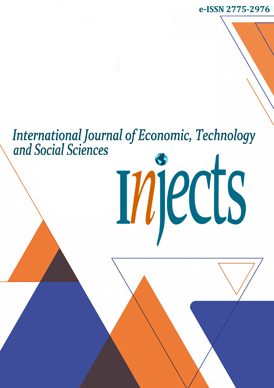The Juridical Analysis of a Comparative Study on the Law of Evidence in Cases of Individual Hate Crimes against Religion and Race (A Case Study of the Verdicts with Register Numbers: 1876/Pid.Sus/2018/PN.Mdn and 2429/Pid.Sus/2018/PN.Mdn).
DOI:
https://doi.org/10.53695/injects.v3i2.828Abstract
The comparison of the law of evidence in criminal offenses is based on the civil code, which includes three theories of evidence: the theory of the law of evidence according to positive law, the theory of the law of evidence according to the judge's consideration, and the theory of the law of evidence according to negative law. This research used the juridical normative method, which is deductive in nature. The data were obtained from primary, secondary, and tertiary legal materials, gathered through documentary study (library research), and analyzed using deductive logic. The conclusion was reached through explaining something from general to specific in relation to court verdicts that are final and conclusive. The research concluded that electronic information, electronic documents, and/or their prints are valid evidence and an extension of documents according to the law of procedure applicable in Indonesia. This evidence cannot be separated from Article 184 of the KUHAP, as they have the same position and function as documents used as evidence. The opinions of forensic digital experts also strengthen the validity of electronic evidence before the court by reconstructing it so that the proceedings are clear.Downloads
Published
2023-03-03
How to Cite
Hutapea, E. M. (2023). The Juridical Analysis of a Comparative Study on the Law of Evidence in Cases of Individual Hate Crimes against Religion and Race (A Case Study of the Verdicts with Register Numbers: 1876/Pid.Sus/2018/PN.Mdn and 2429/Pid.Sus/2018/PN.Mdn). International Journal of Economic, Technology and Social Sciences (Injects), 3(2), 323–331. https://doi.org/10.53695/injects.v3i2.828
Issue
Section
Articles
License

This work is licensed under a Creative Commons Attribution-ShareAlike 4.0 International License.




